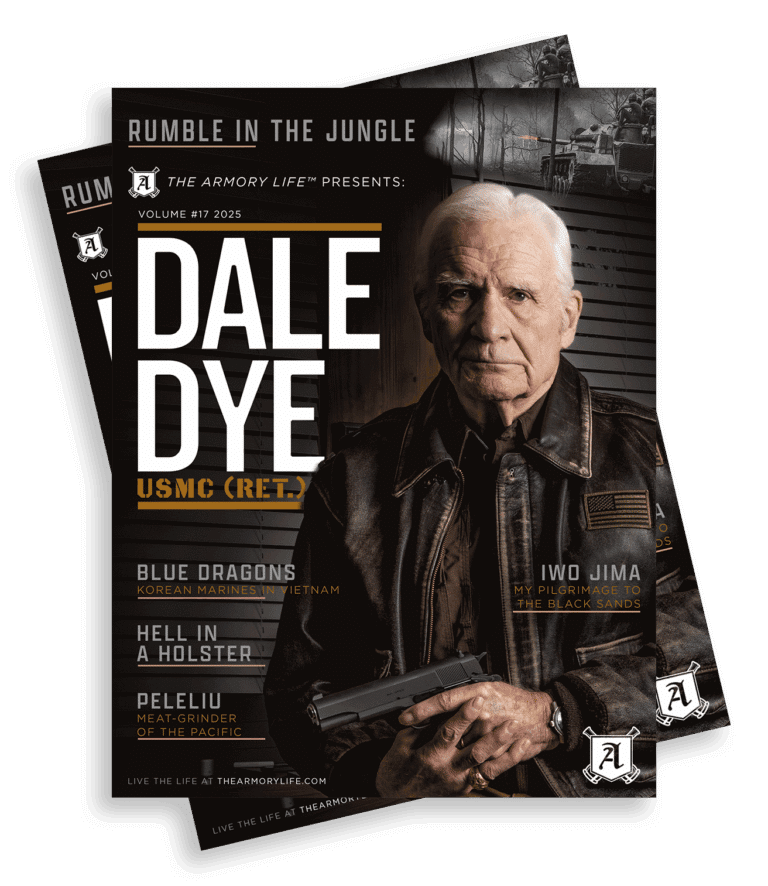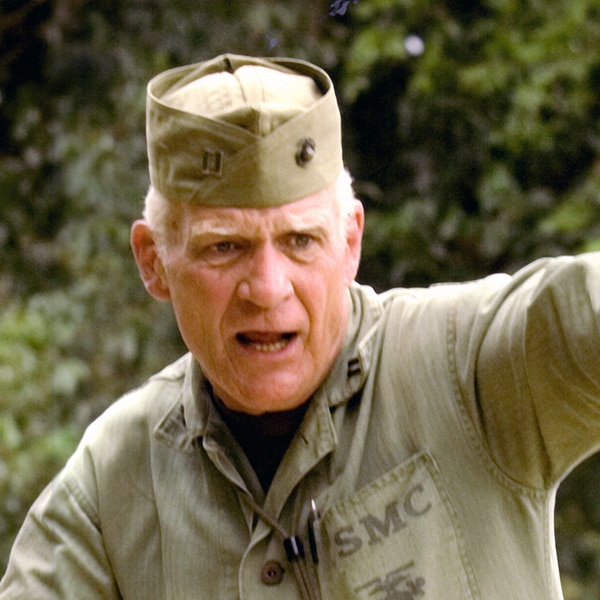Rumble in the Jungle: American Tanks in Vietnam
April 18th, 2023
8 minute read
We welcome Capt. Dale Dye, U.S.M.C. (ret) to TheArmoryLife.com. His article today talks about the use of tanks in the Vietnam War by the United States Marine Corps. Tanks and other armored vehicles were used more in Vietnam than many people realize, and Capt. Dye relates first-hand observations of them in combat.
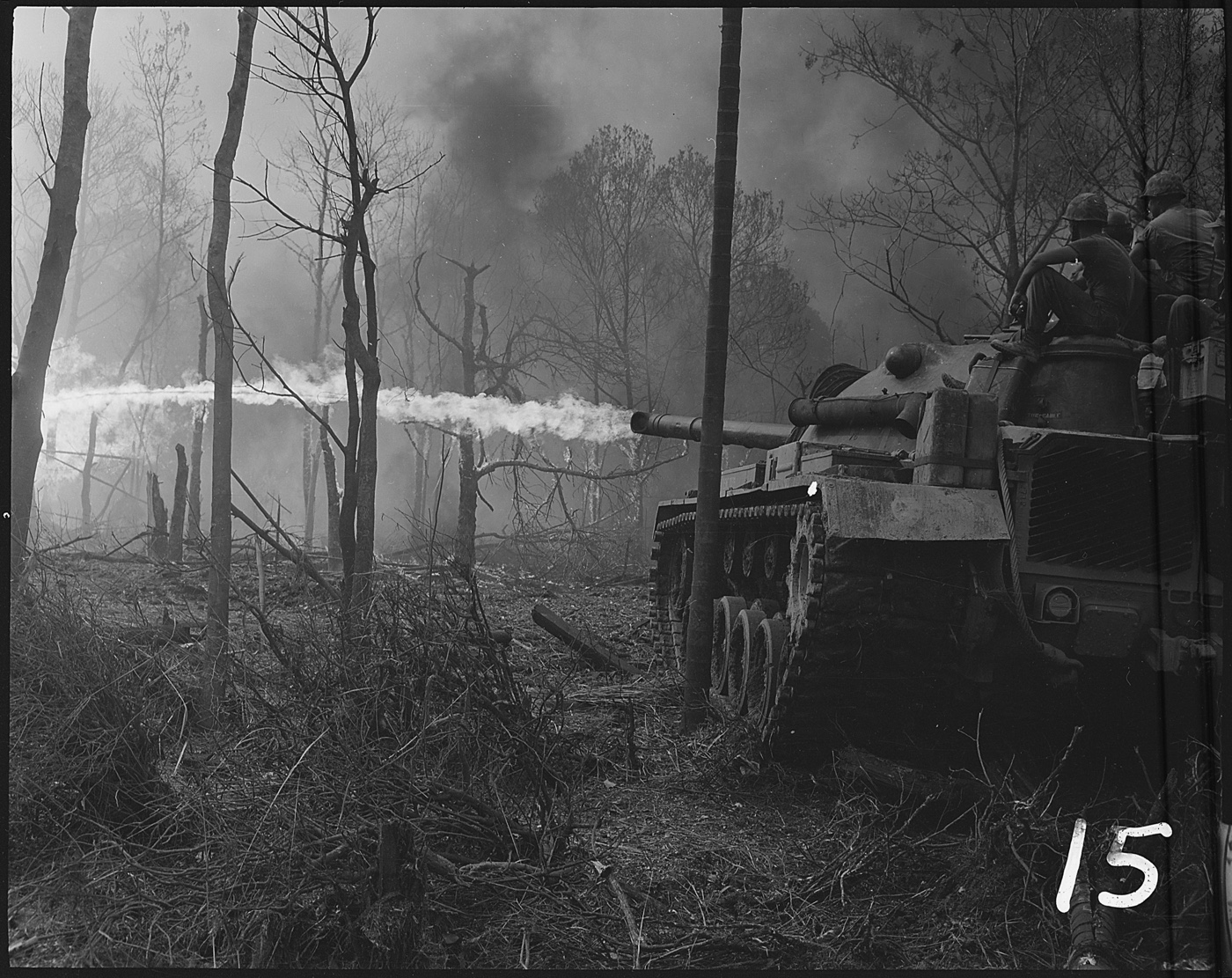
Back in the summer of ’67, I was having a brutal macho slugfest with my bunkmate in Staging Battalion at Camp Pendleton. I maintained that my buddy, who was a tanker, was a no-load weenie who would never see real combat. As I was headed for an infantry assignment, my buddy thought I was a bull-goose looney who didn’t pack the gear to specialize in something less potentially lethal. We were both headed for Vietnam, so those things were important to us. We might both get blown away, but status while doing so was a greater concern.
My arguments were based on the kind of pre-deployment training we were getting which emphasized guerilla warfare, avoiding booby traps, and winkling out Viet Cong guerillas in dense jungles. What good would big tanks and other armored vehicles be in that kind of fight?
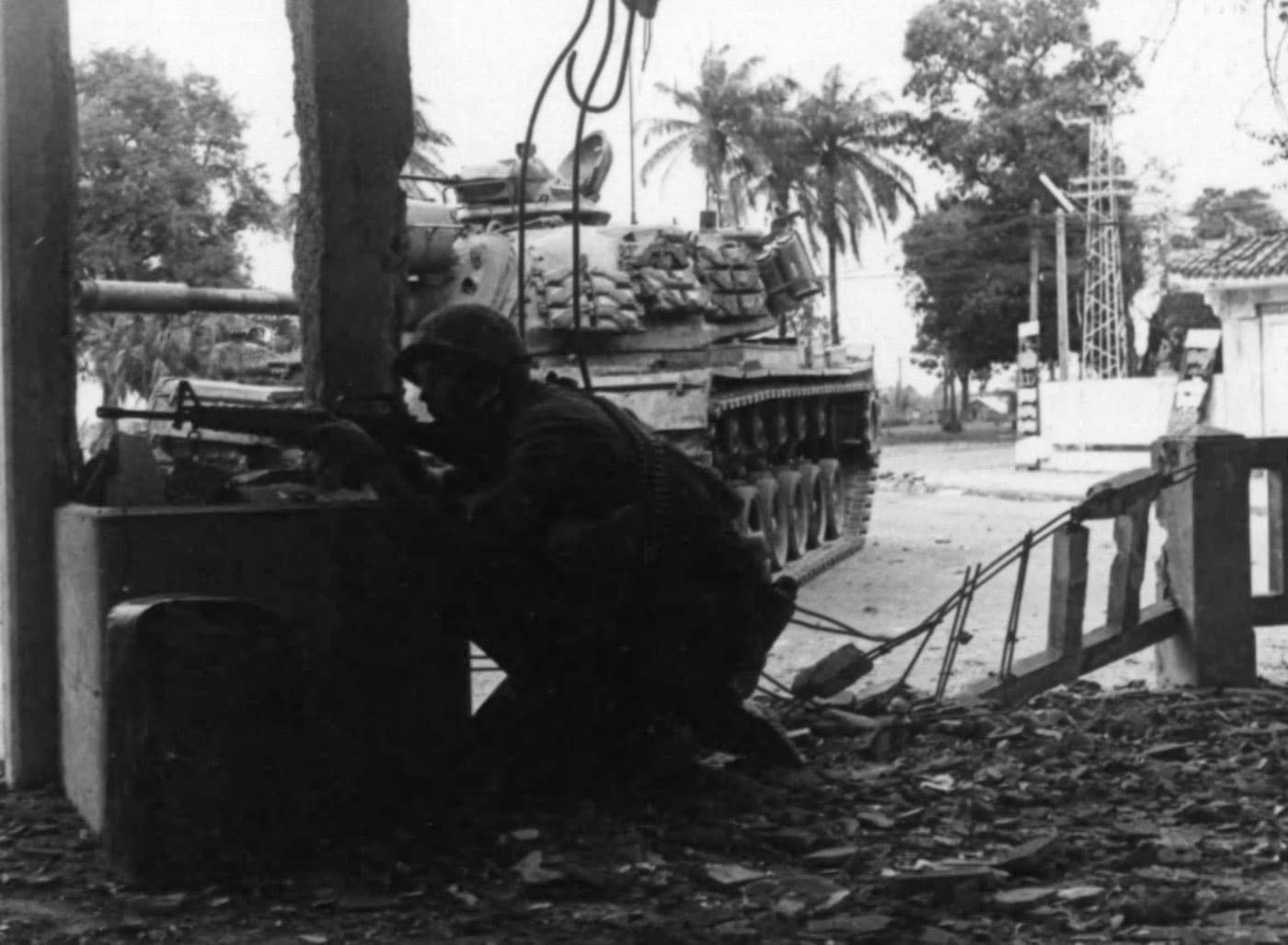
Six months later during Tet ’68 in the Battle of Hue City, I ran across my buddy scrunched into the turret of a Zippo, an M67 flame tank. At this point, I drastically revised my arguments about tankers and close combat. While those of us more directly exposed to rounds, rockets and ricochets on the mean streets of Hue were taking serious casualties, my buddy and his fellow tankers were also getting banged around seriously by NVA rocket gunners who played whack-a-mole with the tanks. It occurred to me, watching his Zippo hose down enemy strongpoints with napalm, that fighting in an RPG-rich environment while perched on a 300-gallon tank of napalm might qualify as dangerous duty.
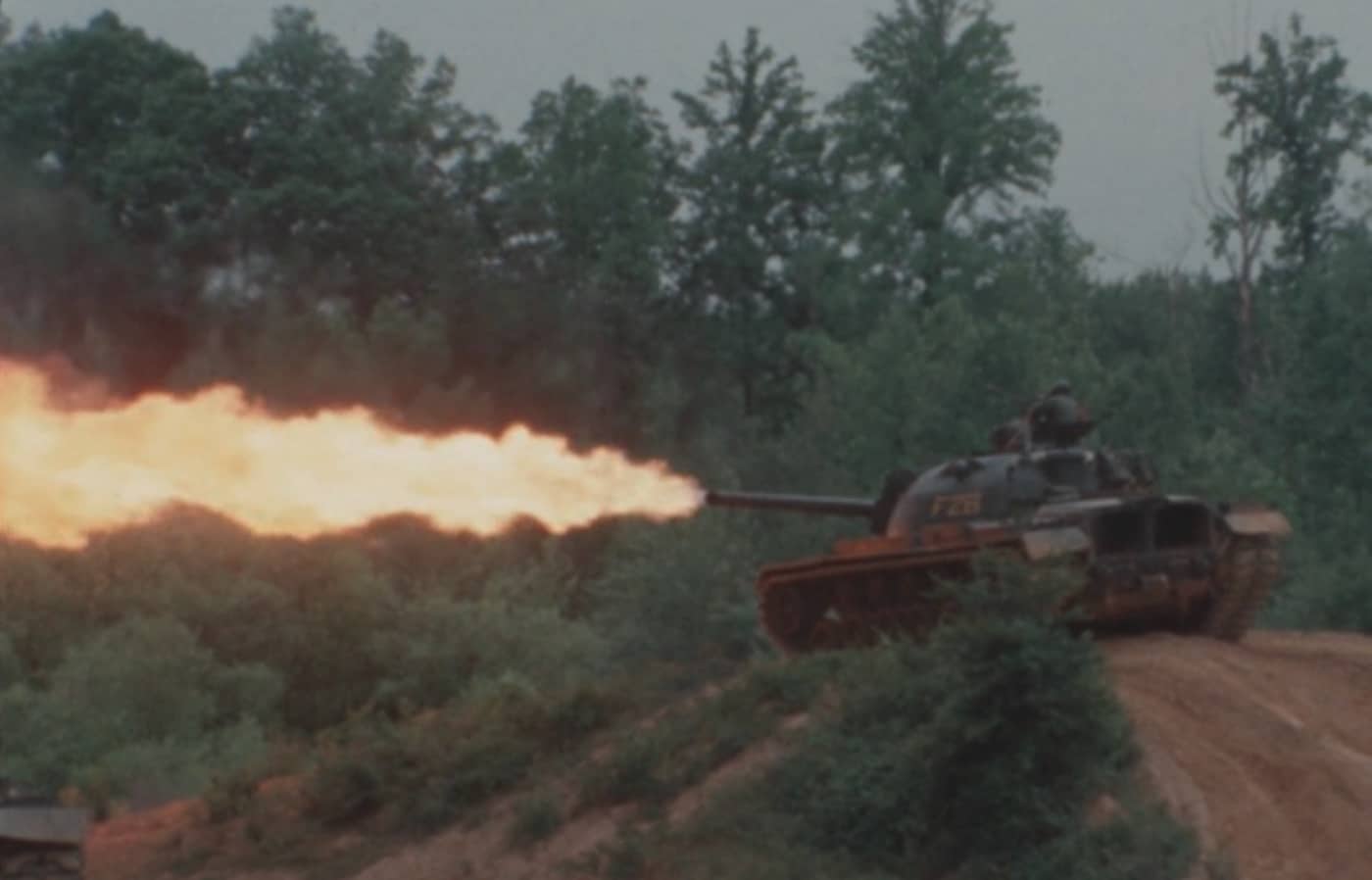
And that was the beginning of my interest in armor as used by U.S. Army and Marine outfits during the war in Vietnam. As I was mostly around Marine Corps tankers and armor crewmen, what I have to say here will have a distinctly Leatherneck bias. More will come later in another article about my experiences with U.S. Army tankers and other tracked vehicles used in Vietnam.
Leathernecks and Steel
Because the Marine Corps fights as a self-contained combat outfit with all organic supporting arms and logistics under the same command umbrella, I had the opportunity to observe tanks and tankers in combat quite a bit from 1967 to 1970.
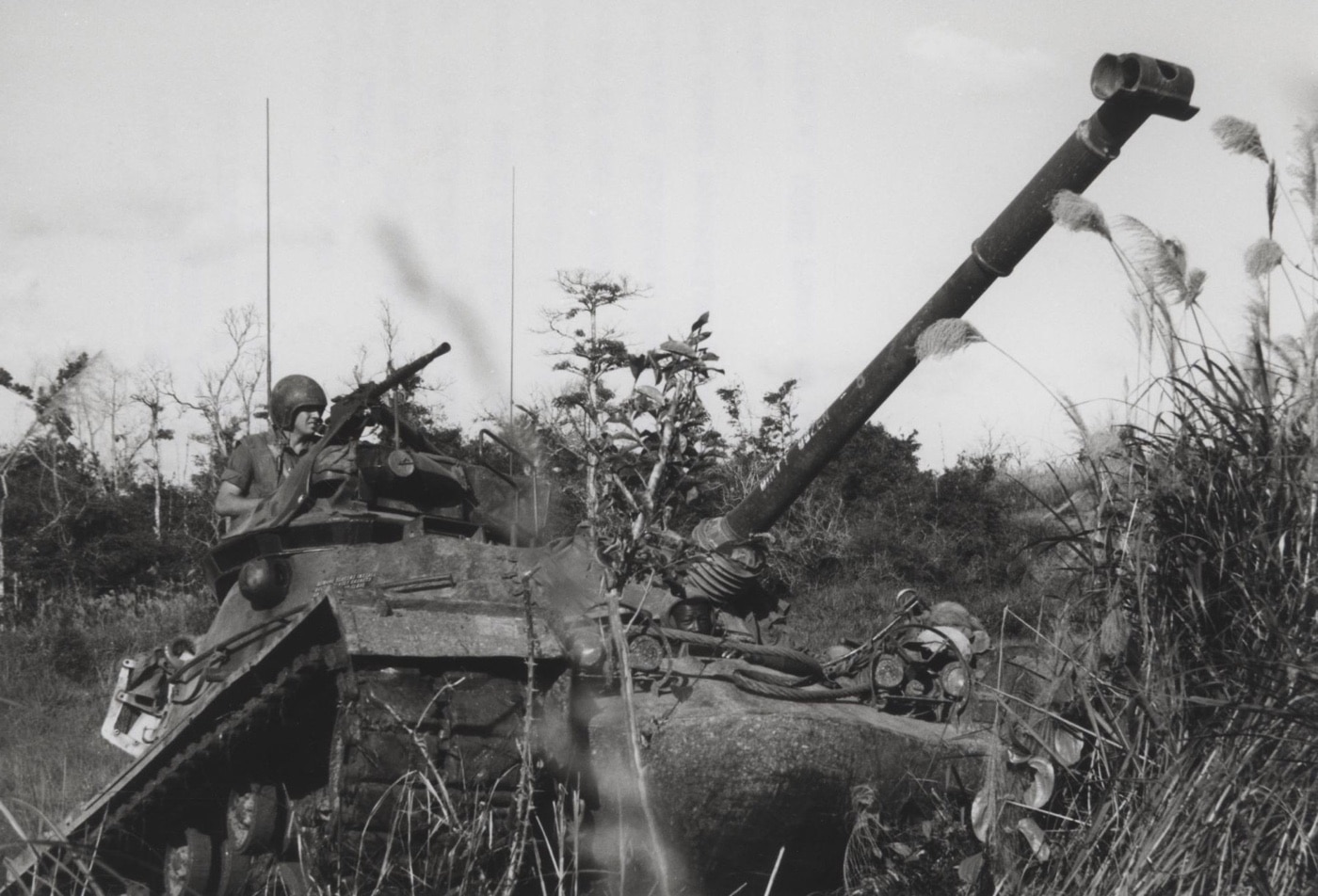
Marine tanks were all variants of the Patton design designated M48A3. They carried a 90mm main armament firing a variety of ammo from High-Explosive Anti-Tank (Heat) to High-Explosive (HE) and the grunt’s favorite Anti-Personnel – Tracer (APERS-T), commonly known as a Beehive Round.
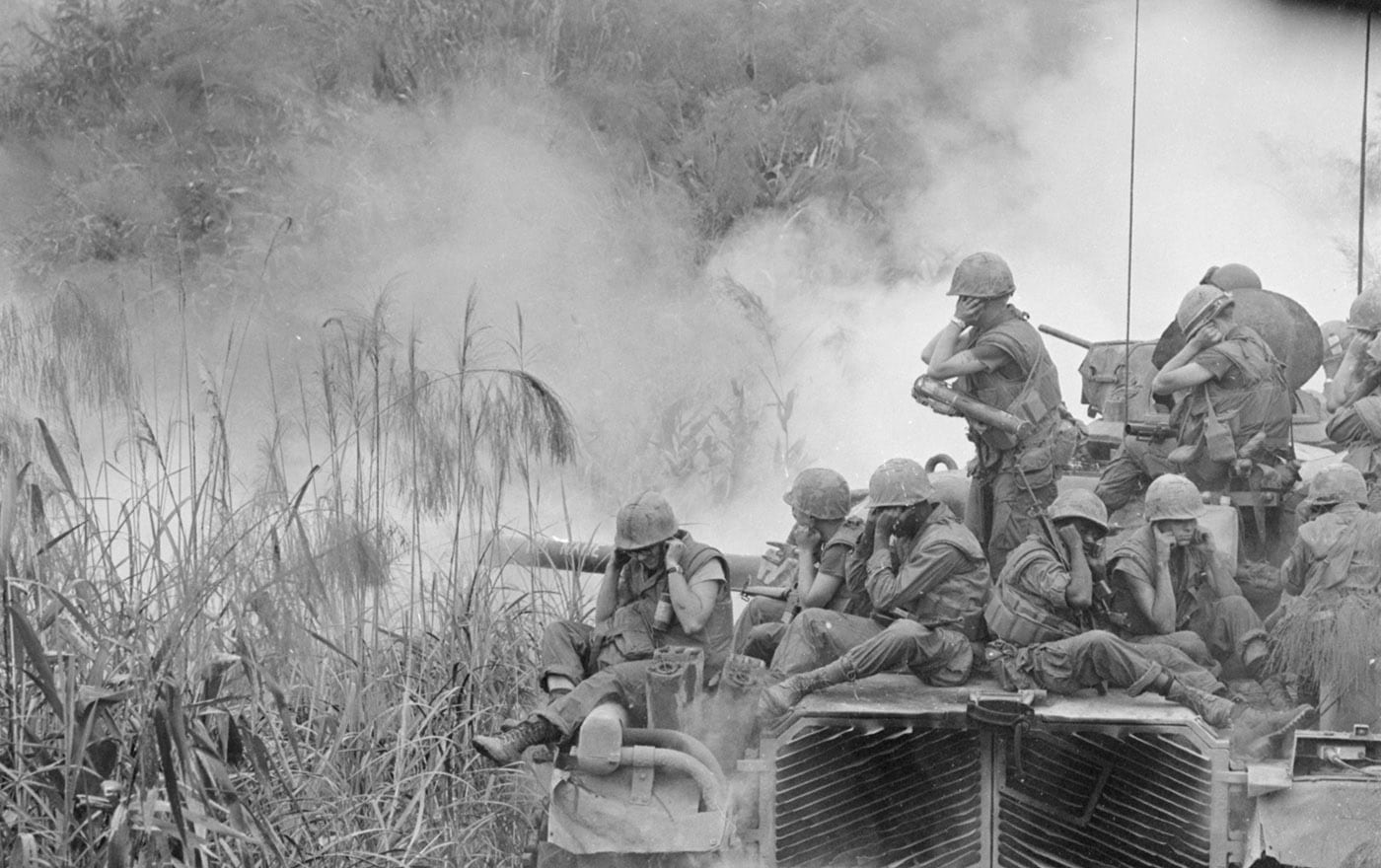
Tanks assigned to infantry-support roles in the two tank battalions of the First and Third Marine Divisions, operating in I Corps (the farthest northern AO adjacent to the DMZ) also sported a .30-cal. co-axially mounted machinegun that was sighted and triggered by the gunner using main-gun fire control sights, and a .50-cal. heavy machinegun either in a cupola atop the turret or hard-mounted pintle on the turret roof.
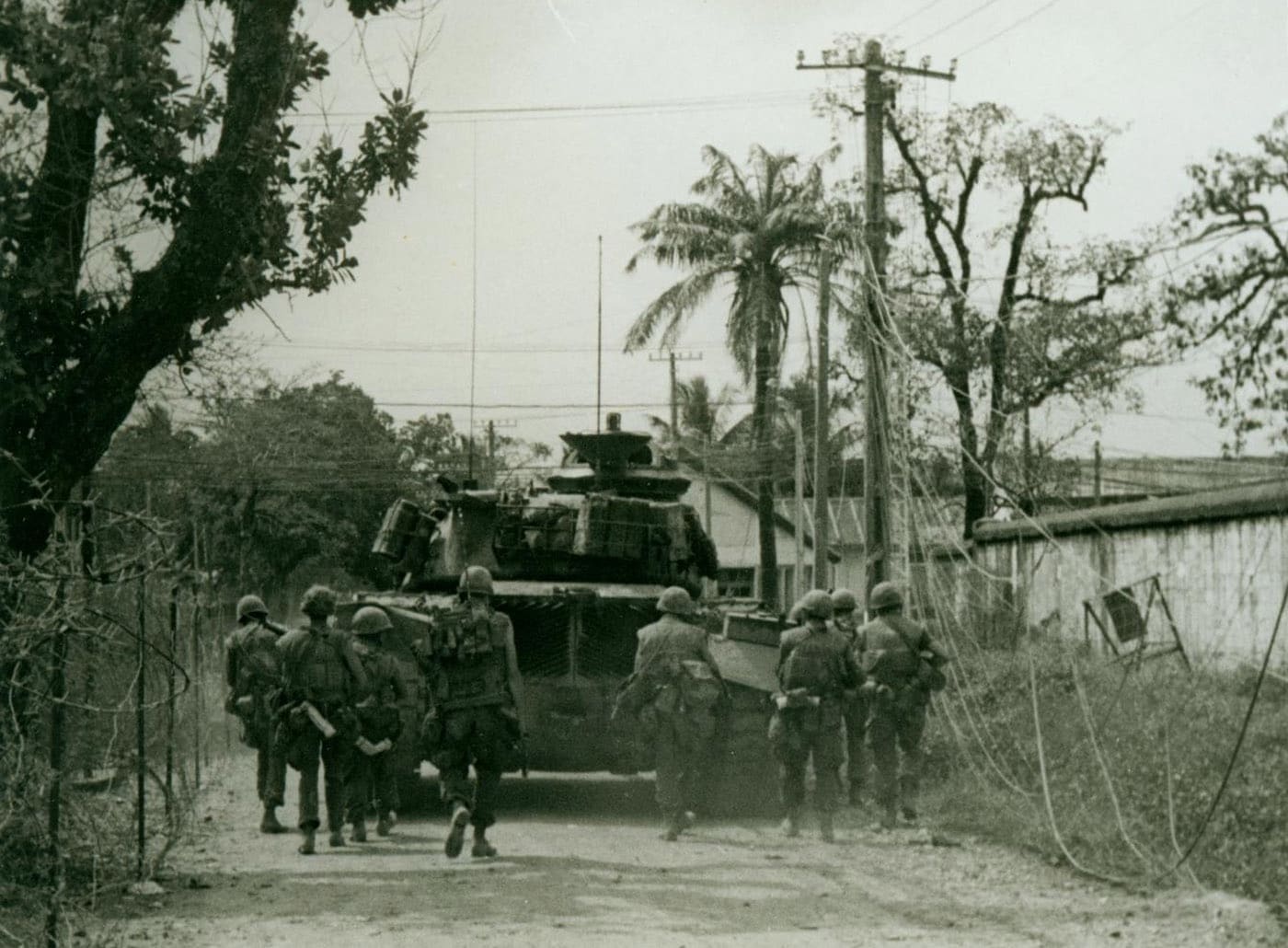
They were 50-tons of bush-bashing beast, but the verdant jungles that severely restricted speed, constant mine threats and low visibility in many areas kept them a bit restricted. They had shock-effect and firepower, but mobility was a drawback in heavily jungled areas. However, as regular formations of the North Vietnamese Army appeared on various battlefields in Vietnam, tanks came to be much more of a valuable asset.
Tanks, armored personnel carriers and related heavy vehicles proved their worth in fights where improved roads allowed them to exploit their mobility and bring heavy firepower to bear on enemy formations battling to control interior lines of communications throughout the country.
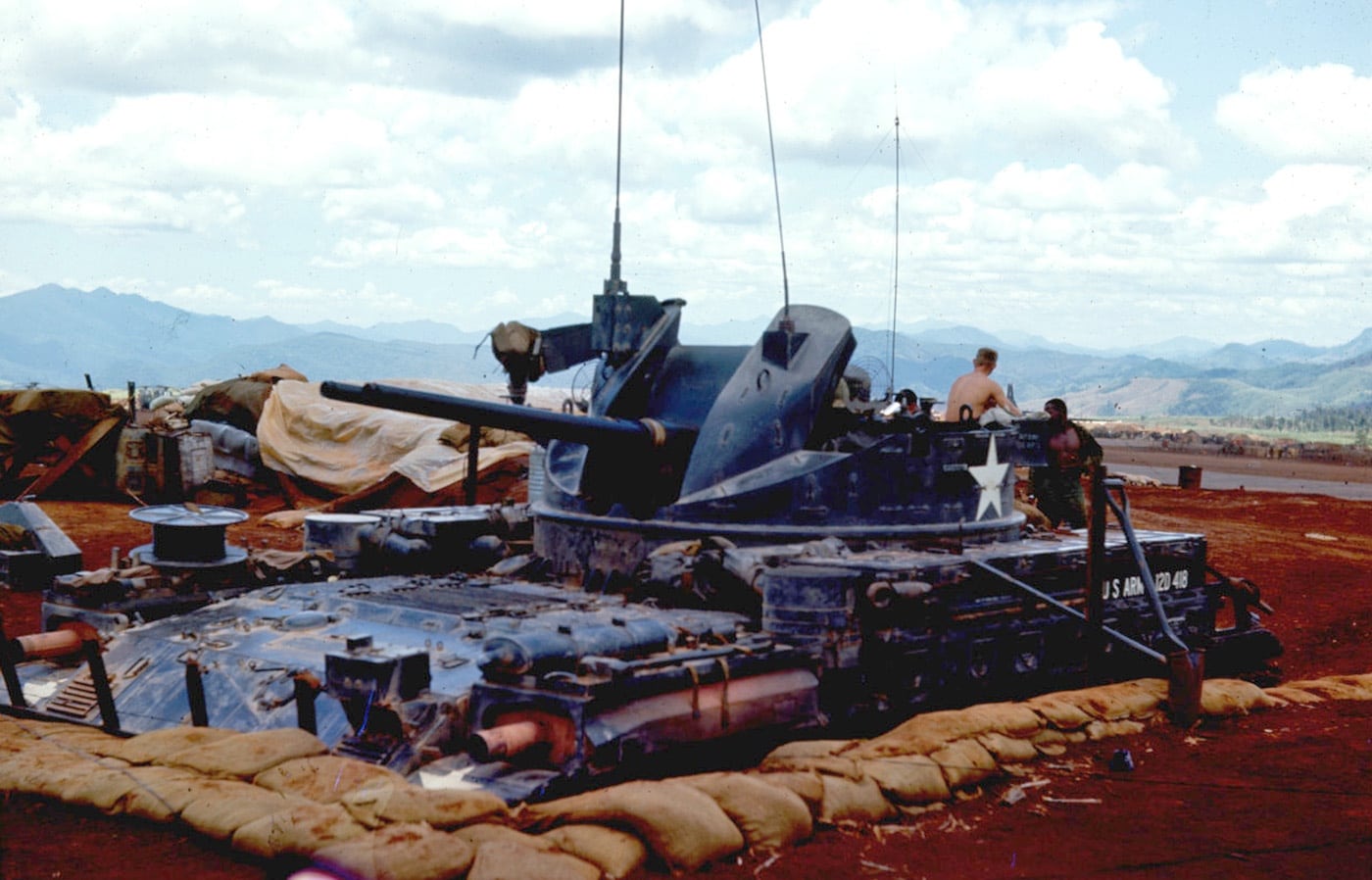
An early and powerful example of this came when my unit was based at Con Thien overlooking the Ben Hai River and the DMZ. We ran regular patrols on adjacent roads to keep supply lines open, and one of our biggest assets was the soldiers from 1st Battalion, 44th Artillery, running M42A1 “Dusters” for us in the road sweeps.
These relatively light tracked vehicles based on the M41 tank chassis, sported a pair of 40mm Bofors automatic weapons that raised hell all over the DMZ and surrounding countryside. It got to the point where Marine units wouldn’t consider running a road sweep without a couple of Dusters rolling along in support.
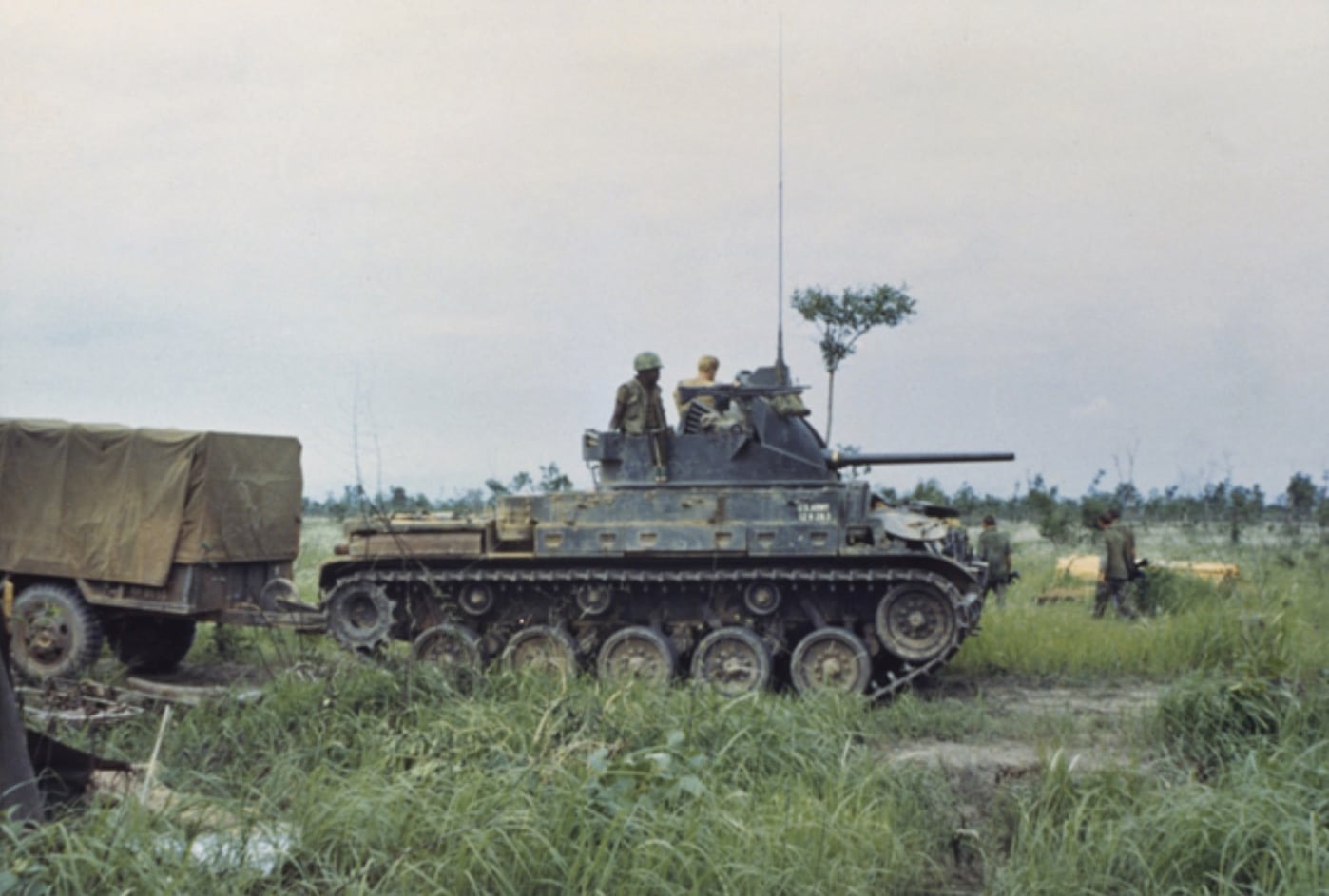
And then came Tet ’68 and the bloody battle in Hue City.
In the Thick of It
In conversation with survivors after the fight in Hue, I learned that Marines were initially reluctant to send tanks into the city. It was basically counter to doctrine that said armor was too often forced into fire-traps on city streets, vulnerable to overhead attacks where their armor was thinnest, and limited turret traverse in narrow confines.
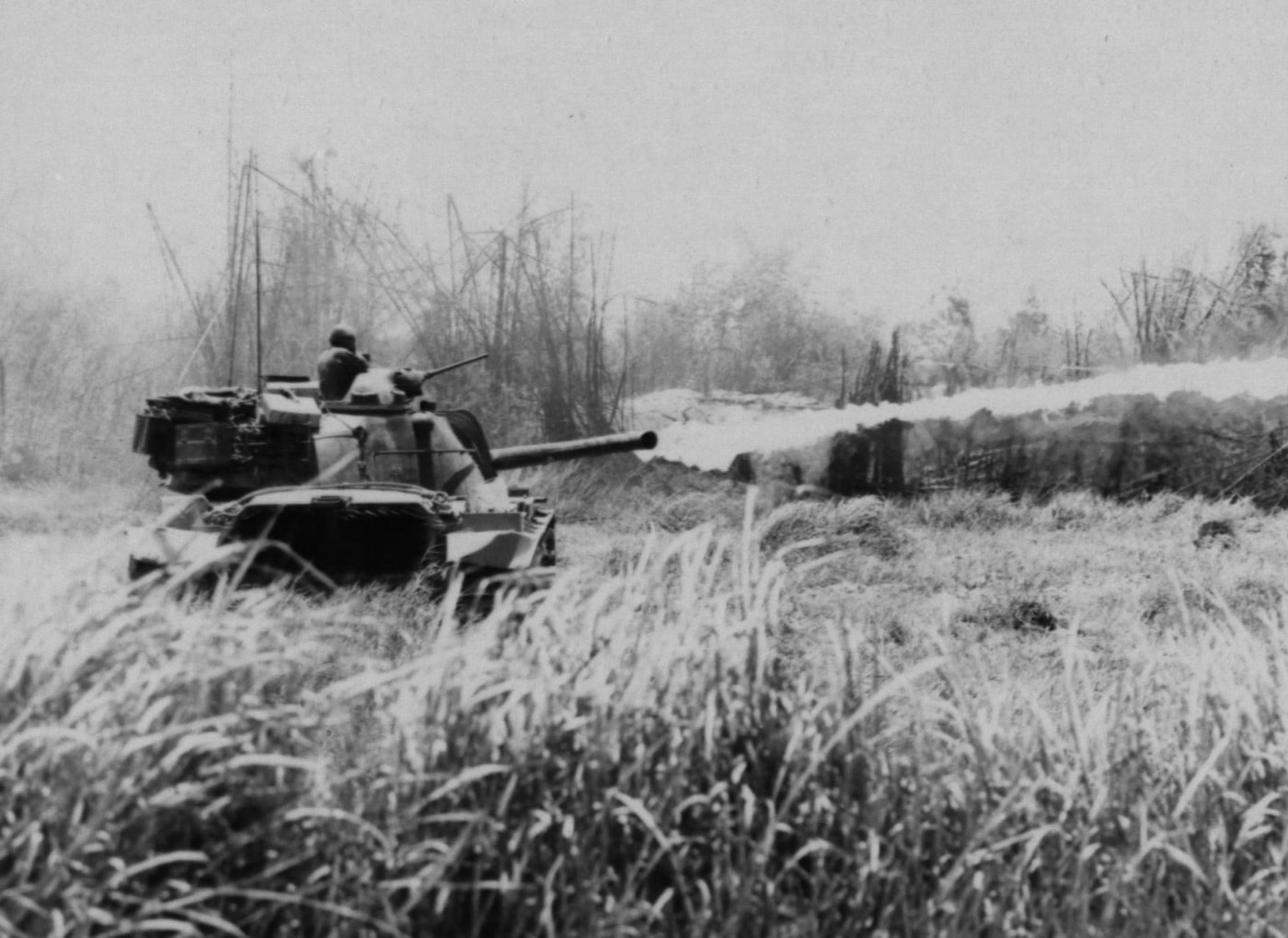
None of those concerns held up when the defecation hit the oscillation in Hue. And Marine tanks were often the deciding factor in street fights that demanded sufficient firepower to blast a stubborn enemy from buildings and concrete strongpoints. A couple of 90mm AP rounds followed by a stream of burning fuel from a Zippo usually turned the tables against NVA defenders.
One of the most haunting images I retain from the Hue City fight is a pulpy NVA corpse standing upright and pinned to a tree by a swarm of flechettes. It might have been a tank round, or one from an Ontos 106mm recoilless rifle — they were all firing Beehive rounds — but the effect was gruesome. The NVA trooper hung like a scarecrow that had been dive-bombed to death by swarms of lethal wasps.
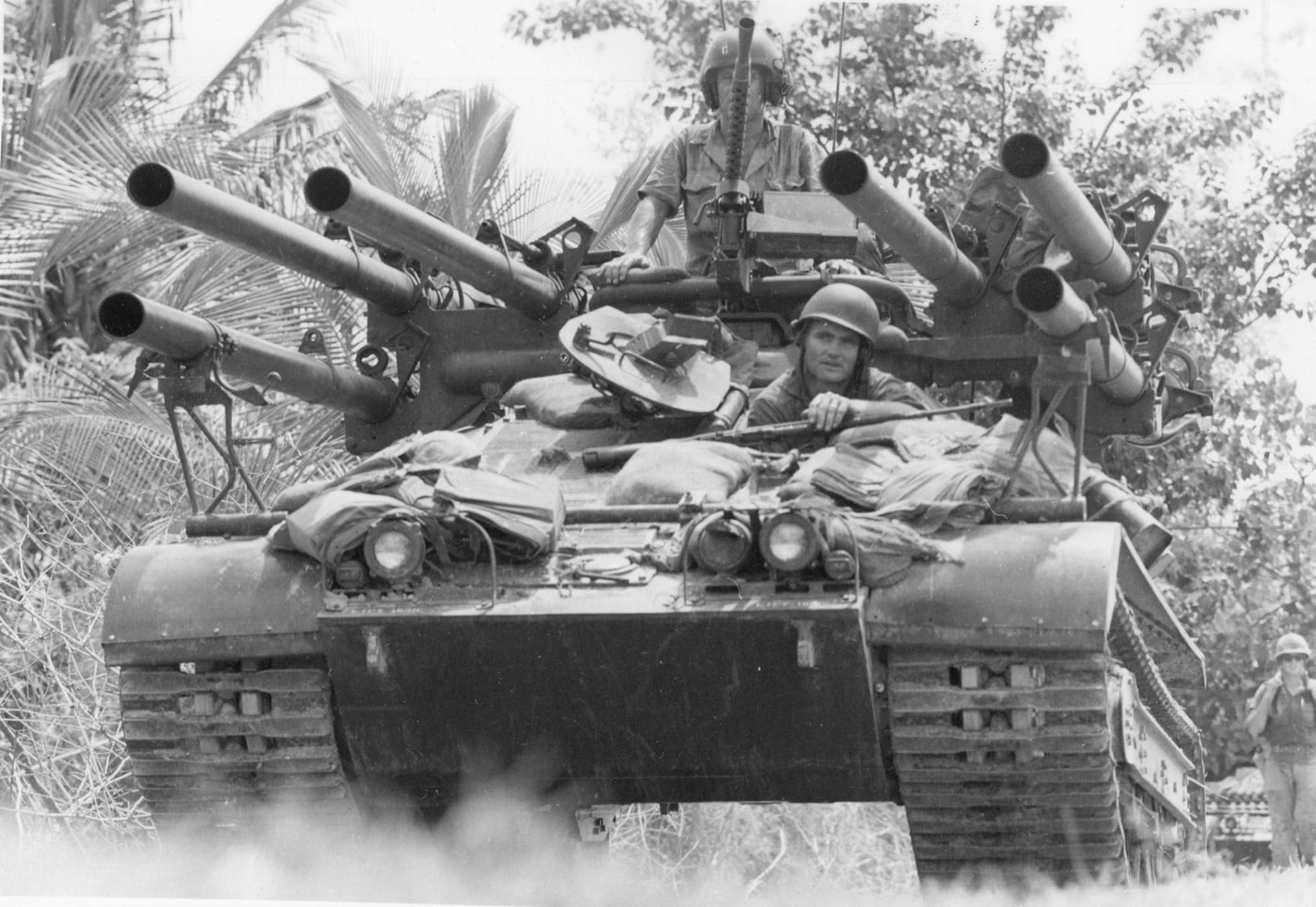
Hue was also my first opportunity to see the Marine Corps’ M50 Ontos in action. Most Marines were familiar at a distance with the weird-looking vehicles from seeing them parked in static perimeter defense positions around major firebases. And most had heard the stories about how the Army tried the Ontos out in the late 1950s and promptly decided it was too thin-skinned and otherwise unsuitable for a variety of reasons, notably the need for some poor crew-dog to dismount under fire in order to reload the six 106mm recoilless rifles affixed to the hull.
But the Ontos — “Thing” in Greek — went bang with a six-barreled vengeance, and that was an attractive feature for Marines who had enough suicidal PFCs to sustain the vehicle’s three-man crews. The Marine Corps adopted the Army castoff Ontos and sent it to Vietnam hoping to use it as a mobile fire-support element for infantry.
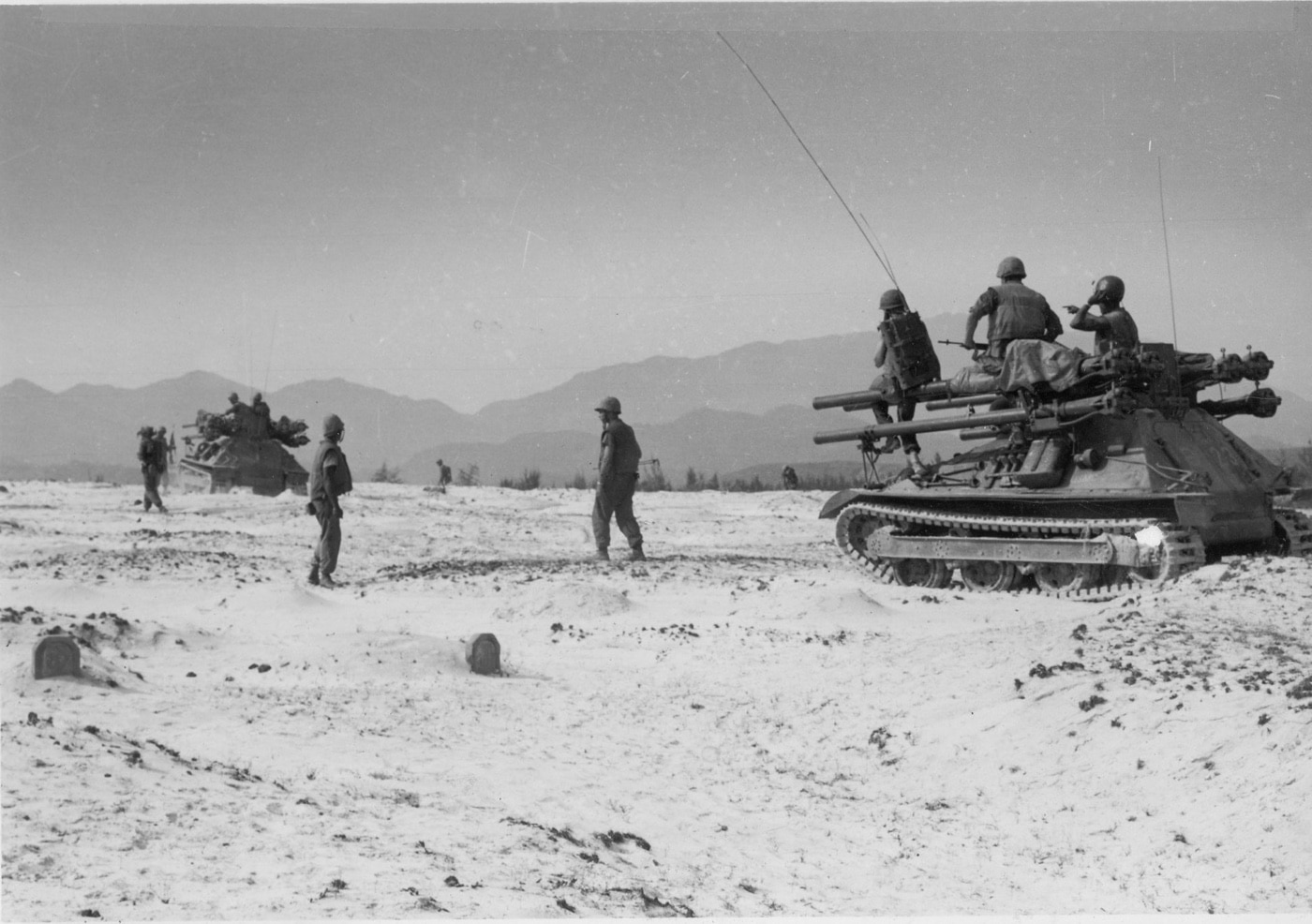
Despite initial casualties, mostly from AT mines and RPGs which devastated the light vehicles, Marines stuck by the Ontos, using its brace of 106mm recoilless rifles to good effect when terrain allowed it to follow close behind advancing grunts. But the Ontos was mainly relegated to perimeter defense or convoy escorts duties until things went weird in Hue City and the Ontos came into its own.
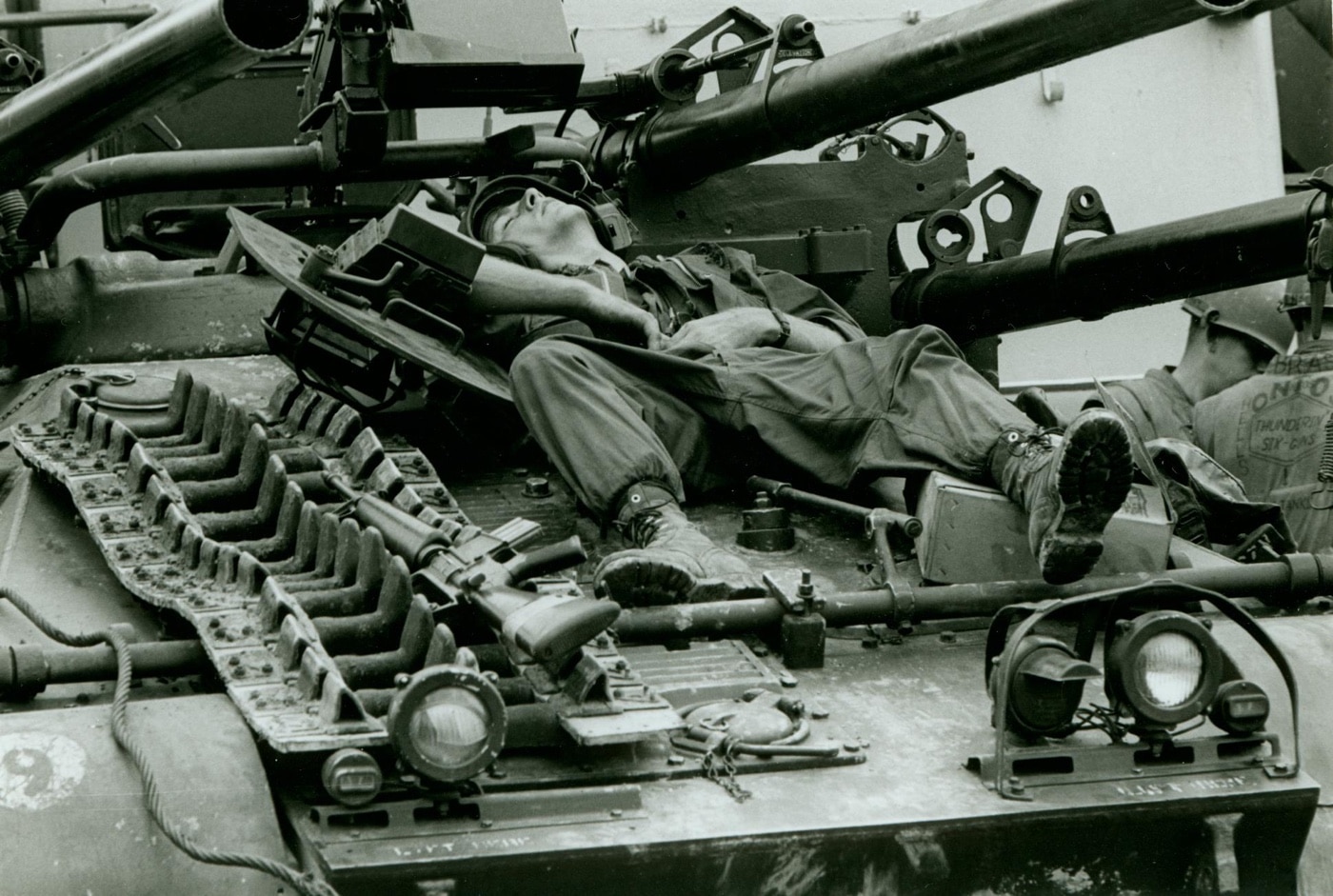
The small, lightweight and fully tracked Ontos was a regular and welcome sight among infantry Marines bulling and blasting their way through enemy defenses in Hue. The crews were nimble and canny in roaring up to a hardpoint and cranking away with rec-rifles fired in pairs or broadsides. No warning was given about the horrendous backblast — and none was needed. When an Ontos was about to open fire — or even looked like it might — we knew to be elsewhere under cover until the smoke and debris cleared.
Conclusion
For the most part, the NVA didn’t employ much armor during the fight in Vietnam. The occasional sighting of armored vehicles on the Ho Chi Minh Trail, and the attack by a platoon of PT-76s on the SF camp at Lang Vei in Feb. ’68, were exceptions. In fact, until the massive NVA offensives toward the end of the American involvement (Easter Offensive in ’72 and the final push to end it all in 1975), enemy armor was not much of a worry for allied troops on the ground in Vietnam. But our armor undoubtedly worried them.
Editor’s Note: Please be sure to check out The Armory Life Forum, where you can comment about our daily articles, as well as just talk guns and gear. Click the “Go To Forum Thread” link below to jump in and discuss this article and much more!
Join the Discussion
Continue Reading
Did you enjoy this article?

 875
875




